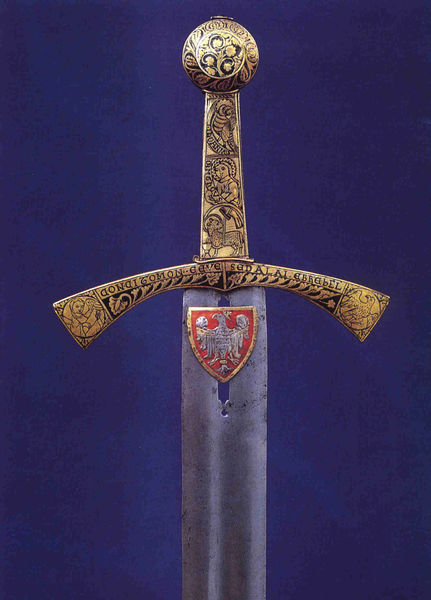Word of the Day
HILT (hilt)
Handle of a sword or dagger
Common clues: Sword handle; Dagger handle
Crossword puzzle frequency: 2 times a year
Frequency in English language: 23292 / 86800
The hilt of a sword is its handle, consisting of a guard, grip and pommel. The guard may contain a crossguard or quillons. A tassel or sword knot may be attached to the guard or pommel.

The pommel (the name is derived from the Latin for a "little apple") is a counterweight at the top of the handle. Even the lightest of modern fencing weapons use the weight of the pommel to provide a balance that the wielder prefers. In this sense, the pommel has remained one of the few parts of a sword that has more than any other retained its ancient function. Pommels have come in a wide variety of shapes, including crescents, oblate spheroids, semicircular, and disks.
The grip is the handle of the sword. It was usually of wood or metal, and often covered with shagreen leather or shark skin. Shark skin proved to be the most durable in temperate climates but deteriorated in hot climates, and consequently rubber became popular in the latter half of the 19th Century. Whatever material covered the grip, it was usually both glued on and held on with wire wrapped around it in a spiral.
In full armored battle, however, the grip was often only used with one hand (even on two-handed swords), and the blade was gripped partway up, thus allowing the fighter to thrust the blade horizontally, with both hands, into the opponent.
The guard protects the user's hand from the opponent's sword. In early swords it simply did not exist. Later it was usually a straight crossbar ("quillons") perpendicular to the blade. Beginning in the 16th century in Europe guards became more and more elaborate, with additional loops and curved bars to protect the hand from cuts. Ultimately, the bars could be supplemented or replaced with metal plates that could be ornamentally pierced. "Basket hilt" eventually came into vogue to describe such designs.
Simultaneously, emphasis upon the thrust attack with rapiers and smallswords revealed a vulnerability to thrusting. By the 17th century, guards were developed that incorporated a solid shield that surrounded the blade out to a diameter of up to two inches or more. Older forms of this guard retained the quillons or a single quillon, but later forms eliminated the quillons, altogether. This latter form is the basis of the guards of modern foils and Épées.
This article is licensed under the GNU Free Documentation License. It uses material from the Wikipedia article "Hilt".
|
|